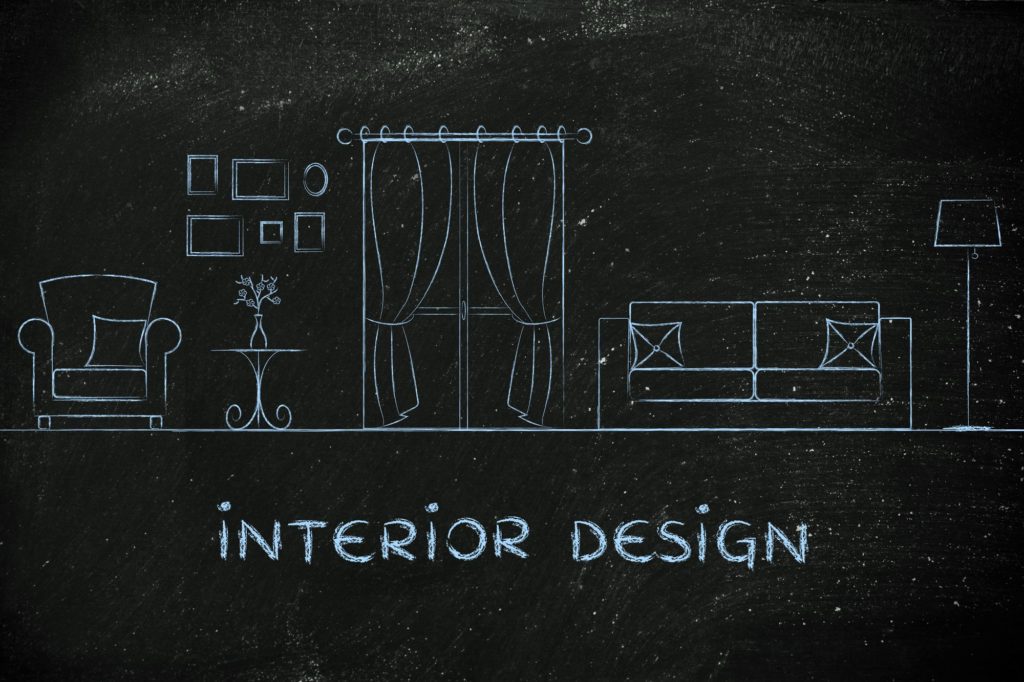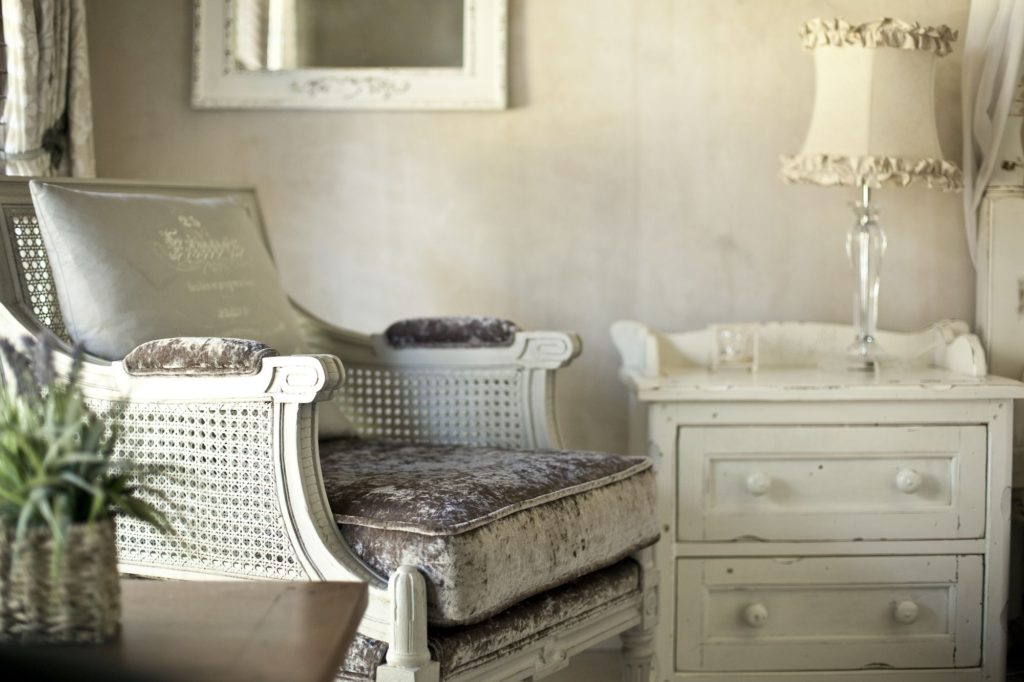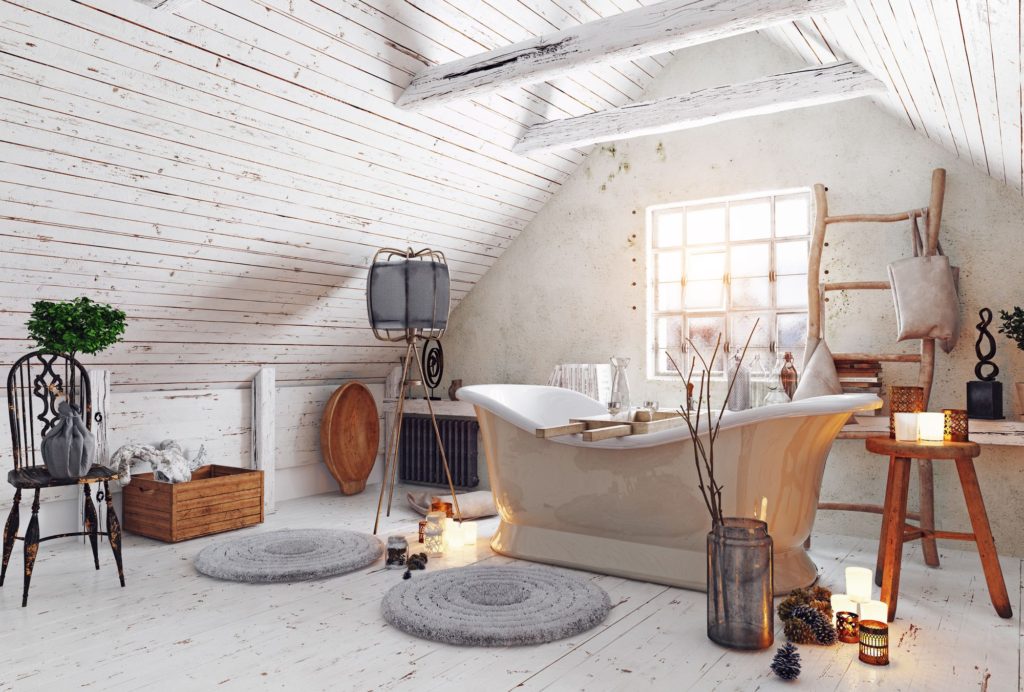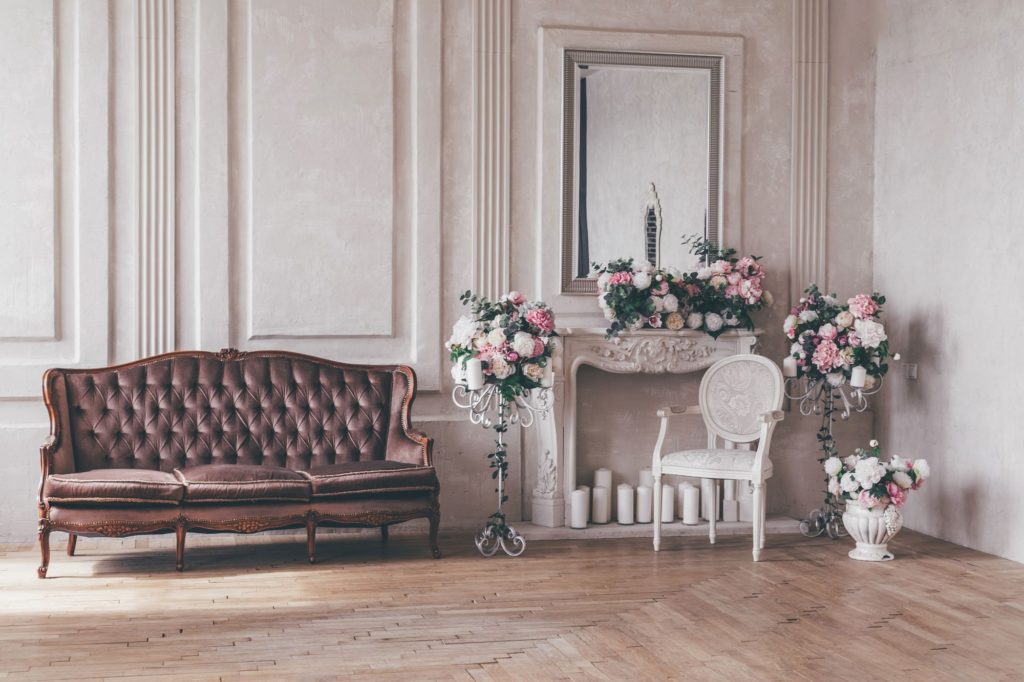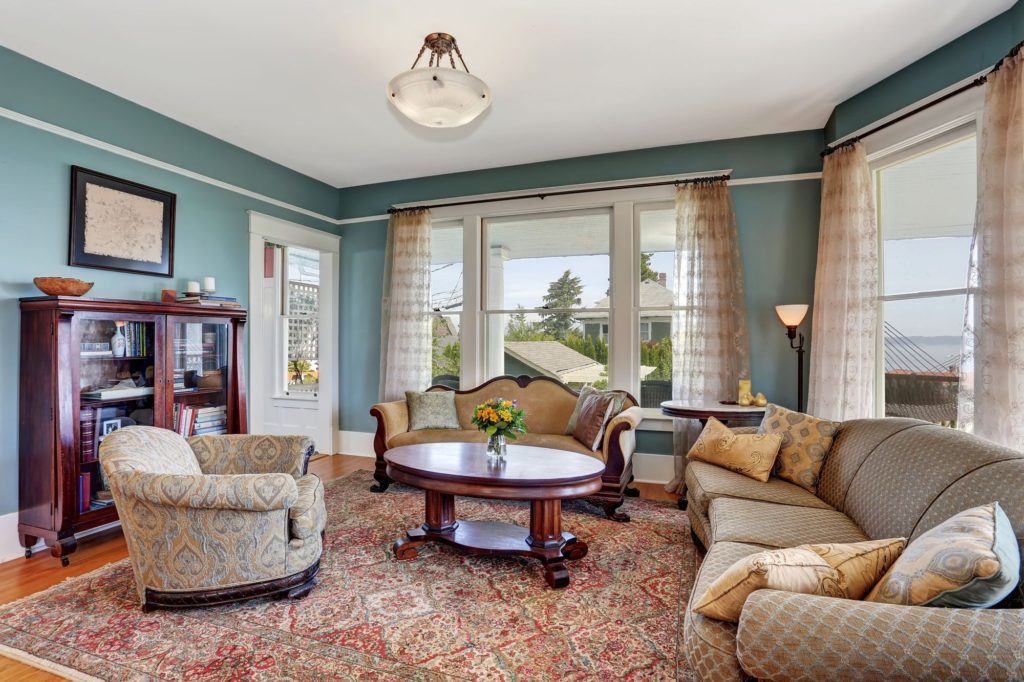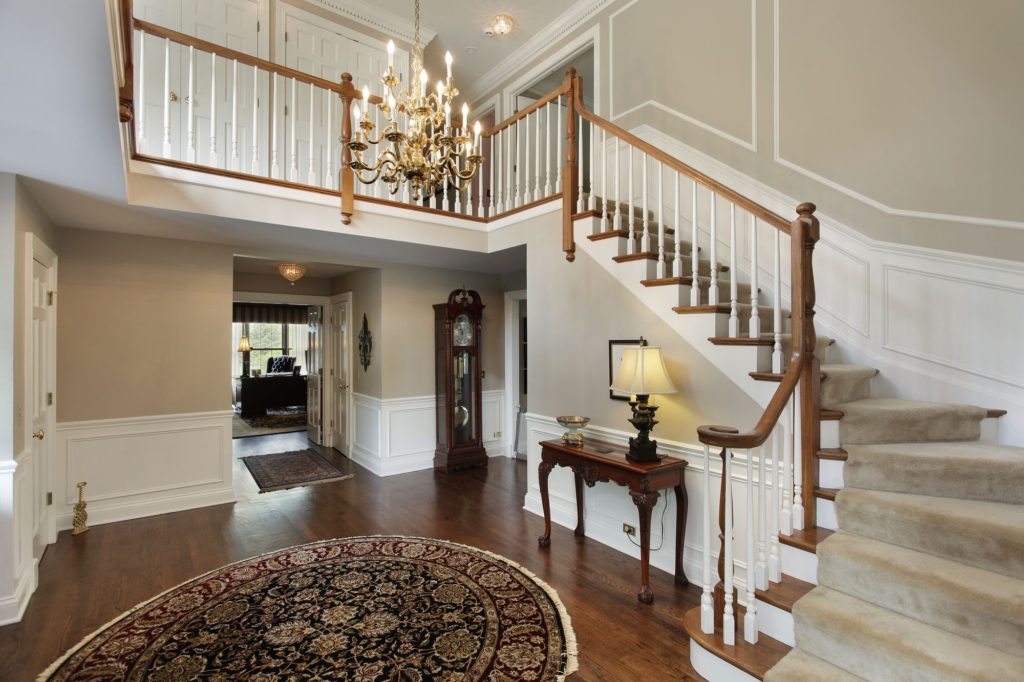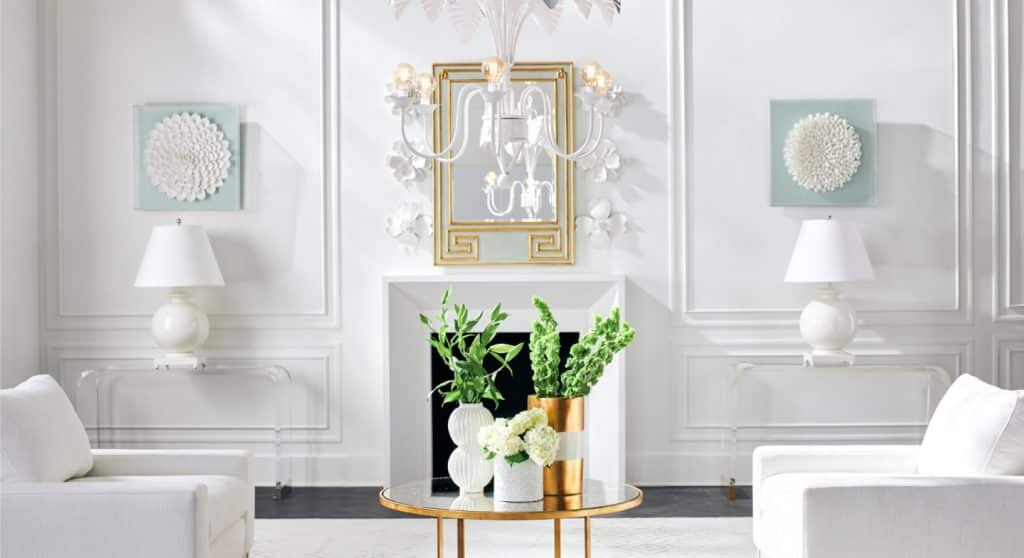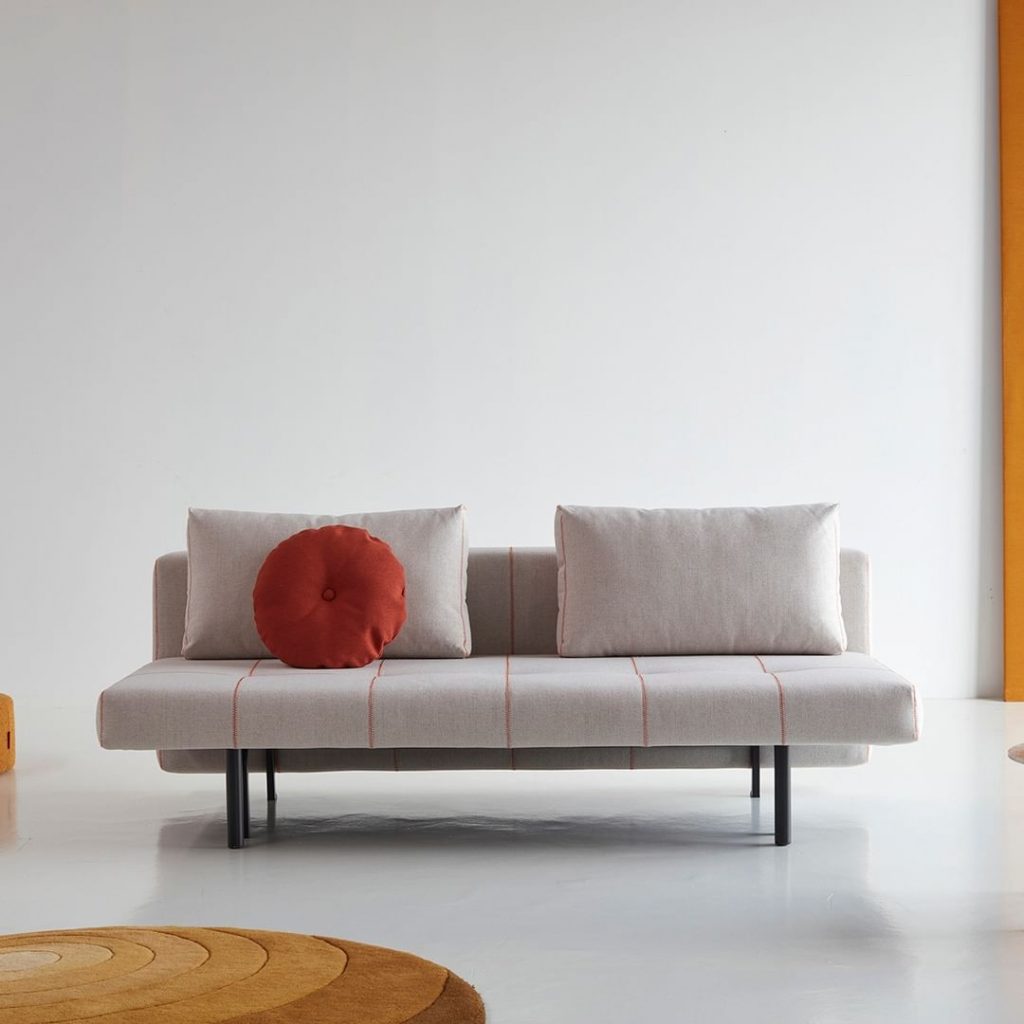Interior fashion trends change frequently. Modern, spectacular trends are replaced by luxurious classics and vice versa. But there are styles, the relevance of which remains unchanged under the influence of a variety of factors. And from this article, you will find out what styles of home furnishing are popular now.
The list of stylistic trends is very large – it contains various directions that combine many unique details and spectacular accents. That is why users often have problems with the selection and creation of a personal design style for decorating their apartment or house. The main obstacle is the lack of understanding of one direction or another against the background of the abundance of different elements. Therefore, it is important to know the basic features of each style.
Modern – British Art Nouveau style
Modern is in simplicity, lack of an abundance of accessories and clear lines that allow you to correctly place boundaries and accents in the room. Therefore, the concept of modernity can include a variety of combinations of interiors, united by the observance of the main principles of style.
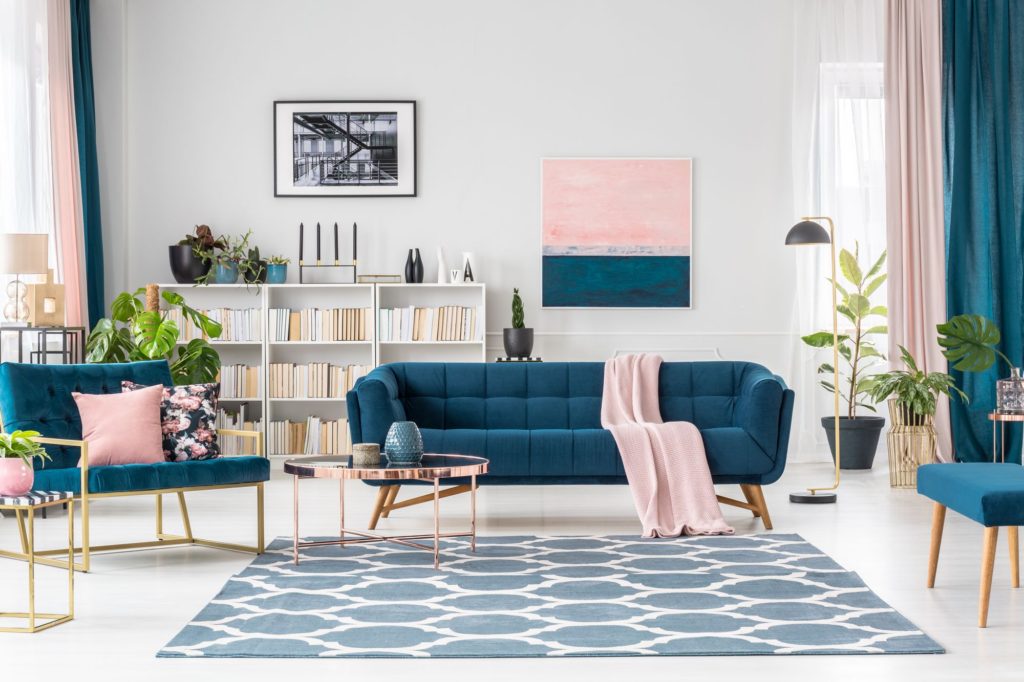
Characteristics:
- Light color palette;
- Luxurious fabrics;
- Wooden furniture with carving or inlay;
- Rounded doorways;
- Gypsum stucco or caissons on the ceilings;
- Parquet.
Modern is associated with a sensual and aesthetic home in which all elements are harmoniously combined. An example of such an interior will be luxurious apartments, which have natural wood furniture, curtains, and drapes made of expensive fabrics with floral prints, picturesque parquet floors. Antique accessories and decorative elements made in the style of artistic forging with curvy silhouettes will complete the image of such a home interior.
The peak of the popularity of this interior style falls at the end of the 19th century. But now, too, many Americans are turning to it, as it allows him to recreate a real picture of sublime luxury in his home with a minimum of accessories and aesthetic fluidity.
Contemporary
The key requisites of the contemporary style are practicality and modernity. Self-sufficiency and democracy are considered to be his credits.
When designing, such techniques as proportionality and zoning are used.
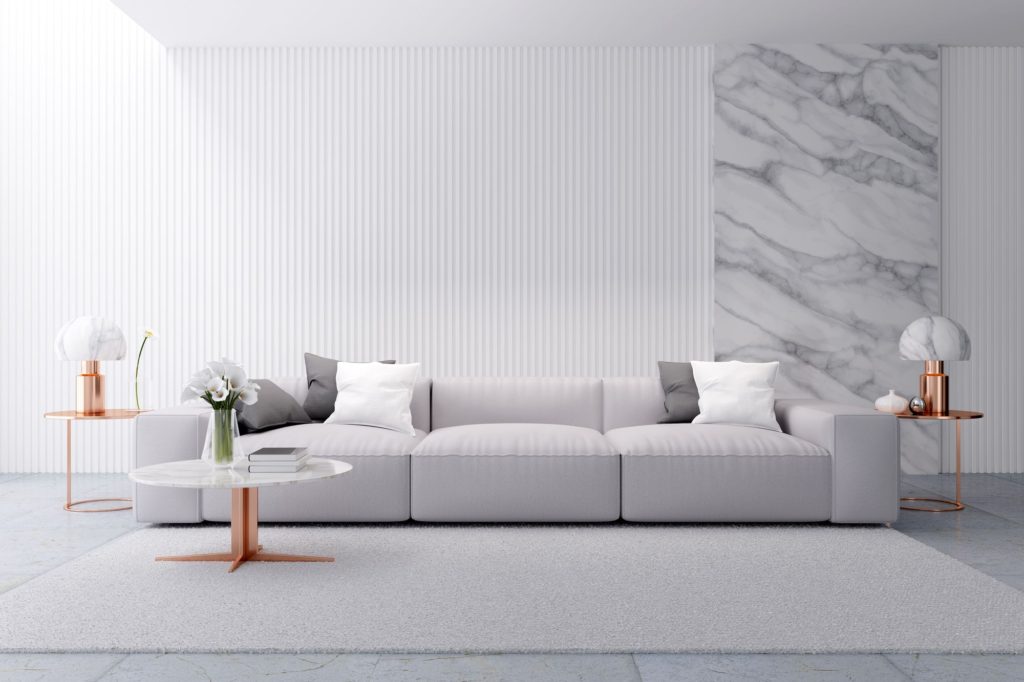
Supporting design elements:
- Classic lines, shapes;
- Built-in furniture modules;
- Items of mass production;
- Use of budget finishing materials is allowed.
Contemporary promotes the principle of life of a modern person living “here and now”. The interiors have a simple layout, practical and uncomplicated furnishings. A typical tool for decorating rooms in this style is a visual separation of space. This can be either zoning with furniture or using different levels of the ceiling or screens.
As for the color scale, there are no clear requirements in the direction of the contemporary. But most often these are light ceilings, walls with photo wallpaper, and cabinet furniture of light or dark shades. Such interiors look good if they have decorative elements from other styles: an English blanket spread on the sofa, a colorful Chinese vase in the corner, ethnic souvenirs on the shelves.
Sometimes the contemporary and modern styles are confused. Although the first personifies mobility and agility without a clear attachment to a particular style, the second is a reflection of a sense of currency and commitment to a single stylistic image. Contemporary American Art Nouveau is more austere.
Industrial
Industrial style – the ideal direction for the embodiment of dynamics, functionality, and mobility in interiors. It is associated with life in a metropolis. It is suitable for those who value their time.
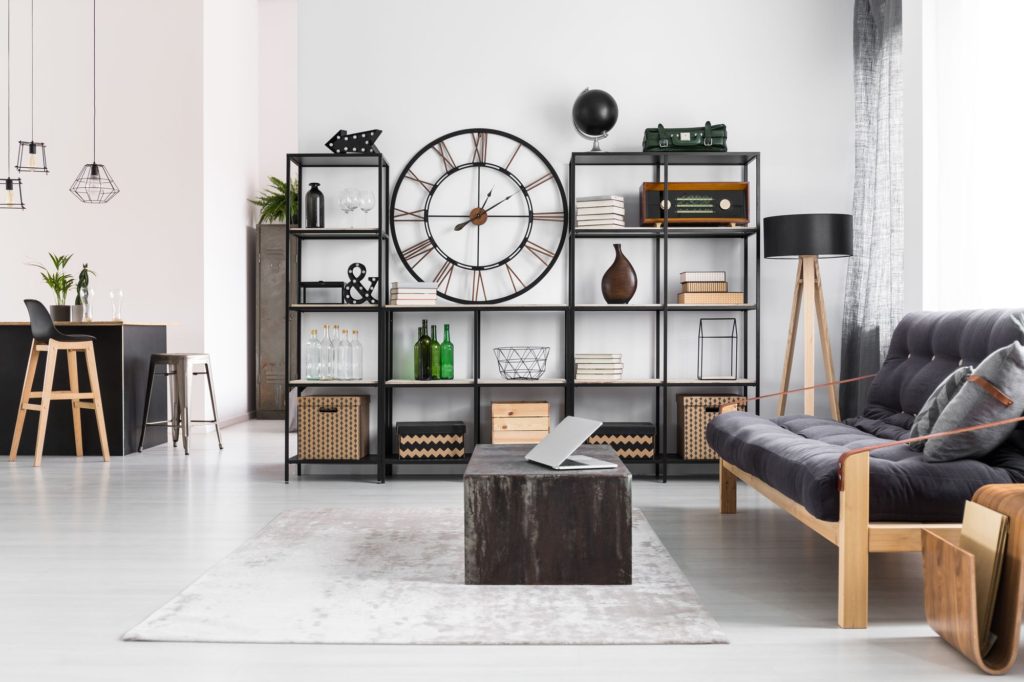
Characteristics:
- High ceilings;
- Exposed brick or concrete walls;
- Visible wiring lines and air ducts;
- Metal chandeliers or just hanging bulbs;
- Neutral finishing colors;
- Using mainly wood, concrete, metal;
- Minimum of furniture.
The industrial style is expressed in simplicity, uncomplicated decoration techniques. The interiors have few details and many functional items. Accessories and decor made of the most unusual products and materials add a special piquancy to the premises. For example, a coffee table from a car engine. As for accessories: ladders, laboratory equipment, road signs, and signs – all in the best traditions of American youth.
Click here to know more information about this style:
Traditional and Modern Accessories for Industrial Interiors
Shabby chic
This is practically the same vintage, but softer, calm, and delicate. A distinctive feature of shabby chic can be considered a hint of antiquity and antiques in the interior. Shabby chic wardrobes, sofas, nightstands, and beds can afford to look, to put it mildly, shabby.
Shabby chic is one of the sure favorites among American designs. It contains wide armchairs with high backs, wicker dining chairs, and dressing tables on filigree legs, and other spectacular objects that pass from generation to generation. In the absence of such interior details, you can always go for the necessary household items at flea markets or home sales, which have already become traditional for the United States.
Natural or intentional aging gives a certain sophistication to the furniture and brings a special chic to the interior. The real highlight of the true American shabby chic is the false fireplaces. They can contain paintings, photo frames, flower arrangements, but most often – scented candles and souvenirs.
The shabby chic color scheme combines light pastel shades. White is also very appropriate and looks beautiful in such interiors. Textile products give a cozy touch to the design. Textile capes on sofas and covers on chairs, pillowcases, linen tablecloths with embroidery, organza curtains, and even burlap products decorated with satin ribbons or lace look harmonious on the premises.
Scandinavian
Despite the volatility of fashion trends, the Scandinavian style occupies one of the leading positions in the rating of styles that are popular in the United States. There are two logical explanations for this:
1. The style of housing in the style of the Scandinavian countries can be easily created on one’s own;
2. The concept of interiors is very simple, with a focus on environmental friendliness, functionality, space, and comfort.
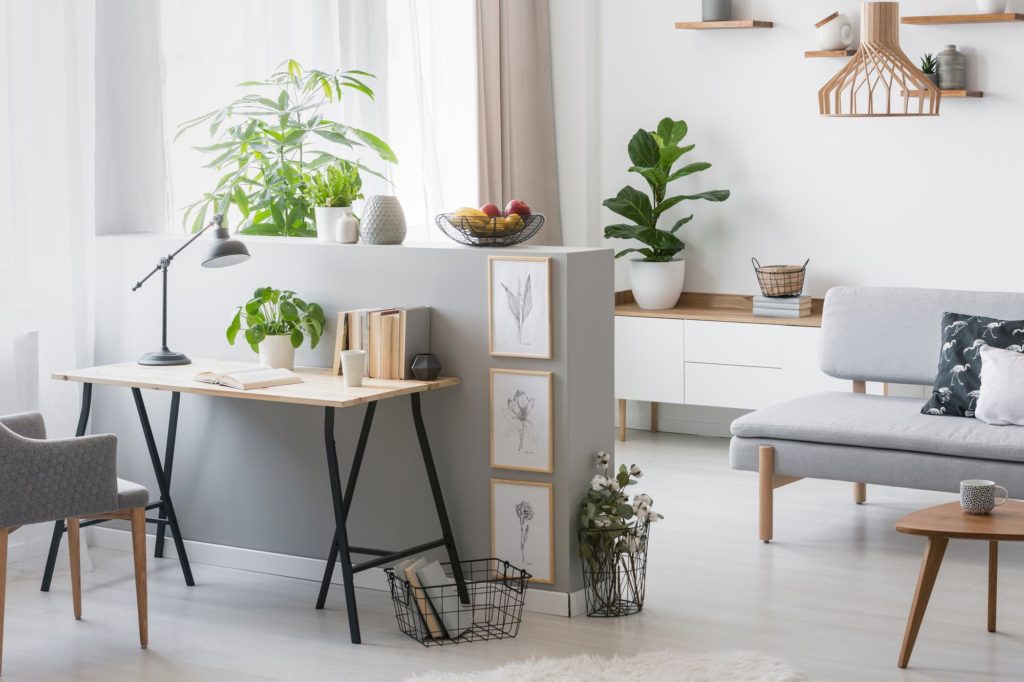
Scandinavian design features an abundance of light, which is achieved through large panoramic windows and translucent curtains. The emphasis is on convenience and naturalness. Therefore, practical and functional furniture with textile upholstery (suede, genuine leather) is installed on the premises. For wall decoration, plaster or eco-friendly paint is used, sometimes wood panels.
A distinctive feature of the style is the minimum number of accessories. Basically, their role is played by items bearing heirloom value. It can be a variety of antiques and necessarily – frames with family photos. The Scandinavian interiors embody the ethnicity and embody the fullness of calm nobility.
Minimalism
The concept of style – maximum space and precision of lines, primitive shapes, multi-level lighting. The essence of these designs is the lapidary of the setting and the simplicity of the composition.
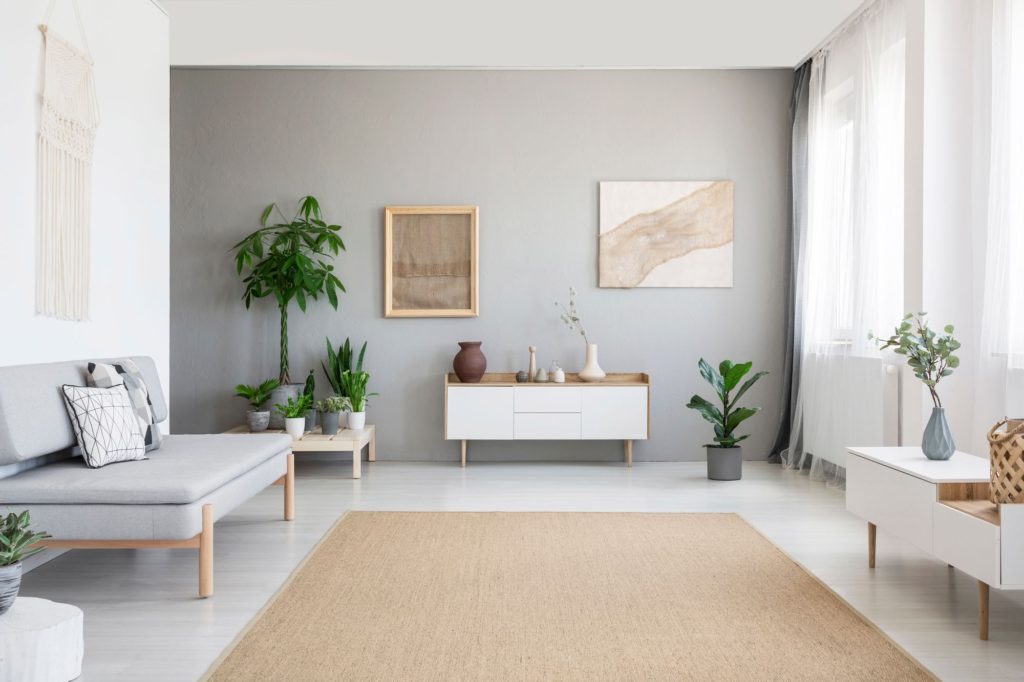
Essential elements of a minimalist style:
- Daylight;
- Combinations of metal and glass products;
- Cozy lighting;
- Cabinet furniture;
- Roller shutters, blinds;
- Lack of bright colors and spectacular decor.
Despite the simplicity, minimalist designs look very strict. To achieve harmony in the interior and combine business notes with home comfort, you can turn to other stylistic directions. By borrowing details from adjacent styles (industrial or Scandinavian minimalism), it will be possible to easily create a pleasant comfortable environment in a house or apartment.
Traditional
Traditional American homes embody luxury, layering, dimension. This design includes classic details, textures, and a wide range of accessories. The concept of the style was formed under the influence of European trends, and therefore the interiors received sufficient depth and sensitivity.
Traditional dwellings have dark natural wood finishes. In such interiors, there must be a variety of details, harmoniously combined accessories. An integral design feature is a rich color palette and a combination of different textures.
Special attention is paid to furniture. It should look majestic and luxurious. It is desirable to have elements that give the items a rich look. In interiors, noble textiles are often used – brocade, velvet, and other fabrics that can have an interesting pattern or print.
Transitional
The transitional (intermediate) style is the “golden mean” between modern and traditional designs. It is very popular among Americans because it combines moderation, elegance, and comfort.
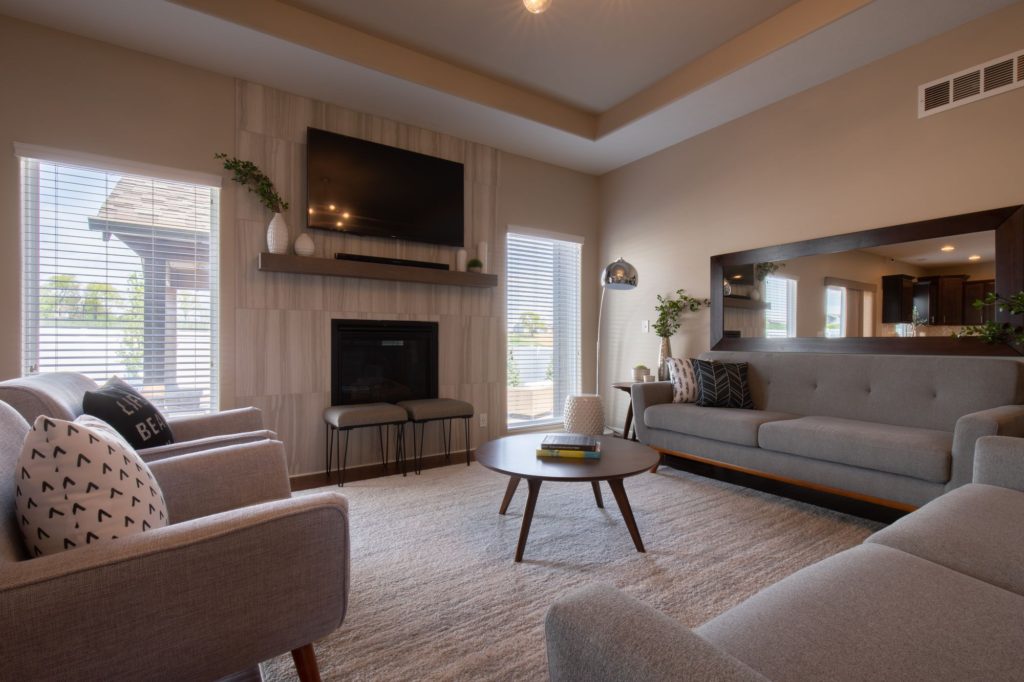
The key rule of transitional style is to achieve the perfect balance without sacrificing comfort and lightness. The main design principle of such interiors is to maintain harmony. This applies to everything: colors, layouts, dimensions and shapes of furniture, lighting, accessories, finishing materials. When decorating, neutral shades of the palette are used: beige, gray, sandy, creamy, chocolate shades.
In the interpretation of the intermediate style, contemporaneity is collective. When working with the details of this direction, you should be careful to avoid edgy accents and catchy elements. Different prints can be used. The least contrasting ones will perfectly fit into this style.
Loft
Loft is another popular style trend, the motto of which is: “maximum space and fresh air, minimum partitions.” The concept of the style is not new – the main idea of using the premises of abandoned industrial and warehouse premises as housing arose in the United States back in the 40s.
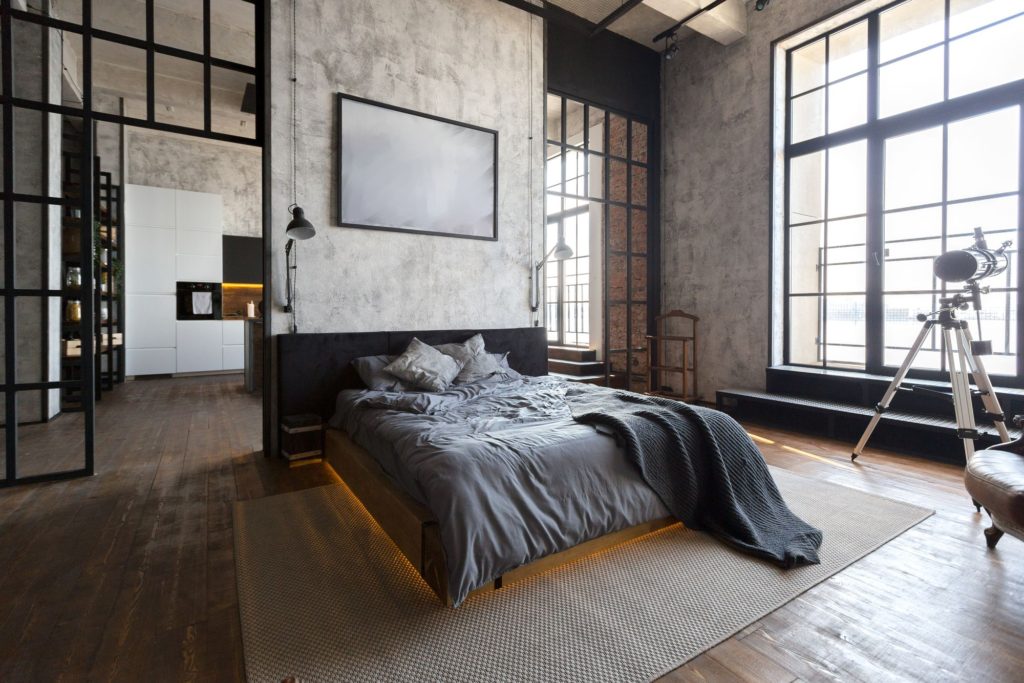
The key to the success of designs is the harmonious combination of different architectural solutions. The interiors are based on simple and functional furniture, large windows and elements of undisguised communications. The open plan, high ceilings, predominantly cold shades of the palette create the most spacious and comfortable environment for creative people.
A distinctive feature of the loft style is the minimum number of accessories. All elements that are present in the interior must carry a functional meaning. In this interpretation, they will decorate the apartment and give individuality to the overall picture.
Click here to know more information about this style:
Traditional and Modern Accessories for Loft Interiors
Soft loft
Unlike the previous style, which is more appealing to creative persons – bohemians, the soft loft is suitable for gentle personalities. This is a fashion trend of the 21st century, which has become a stylization of a classic loft in modern buildings. Soft loft decoration is possible in new-build apartments and office premises.
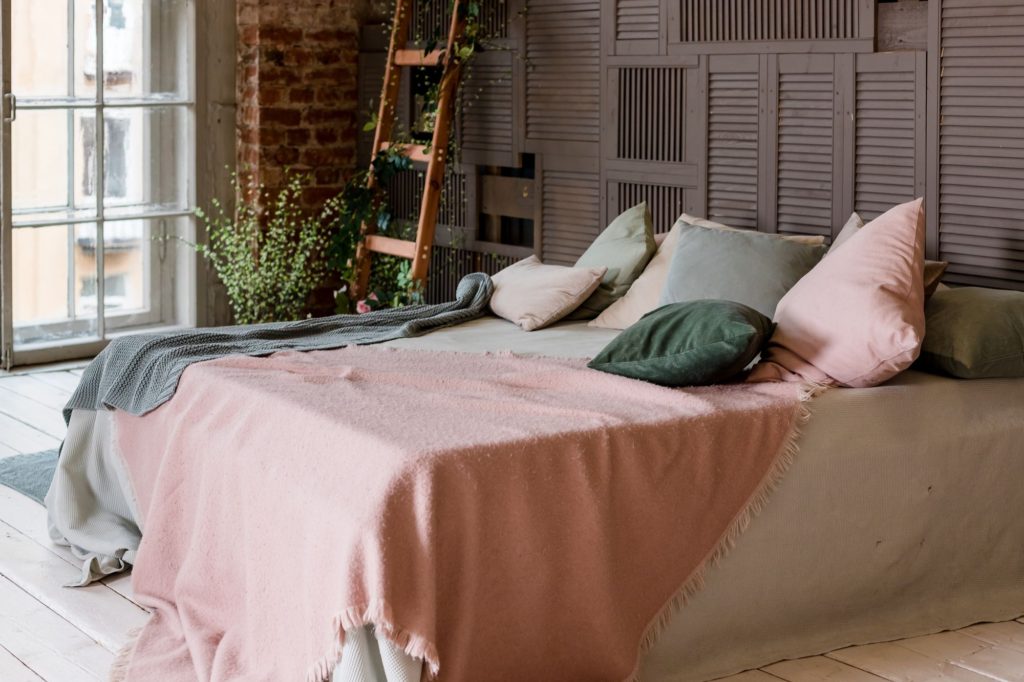
The organization of the space in the soft loft style continues the general idea of the style and maintains maximum openness. Constructiveness is achieved through strict geometric lines and flat surfaces. A prerequisite for designs is an abundance of natural light. Therefore, panoramic windows will fit perfectly into the overall picture.
The individuality of interiors in the soft loft style is achieved through a laconic combination of incongruous – elements from the last century and modern household items. Walls traditional for a loft with bare bricks or concrete pavement take on a deep meaning against the backdrop of modern furnishings and multifunctional household appliances.
For soft loft, a free layout is preferable, without screens, partitions and other techniques. If you want to zone the room, it is better to use furniture, shelving, interior accessories. The preferred palette for embodying this style is light shades of ceiling and floor finishes and contrasting colors in wall décor.
Choosing a style for decorating your home is a responsible and difficult task. Popular American interior styles have different interpretations of designers and decorators, adapted to modern trends. This makes it easy to create a custom design with a comfortable and cozy atmosphere.
